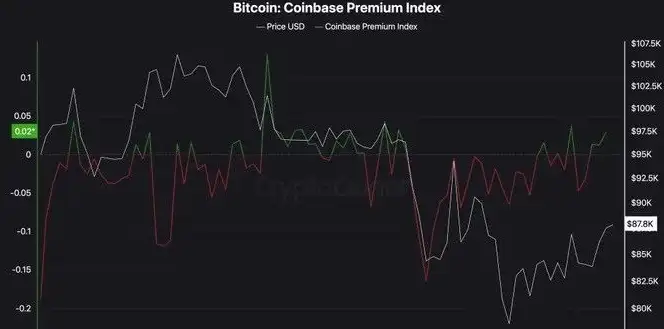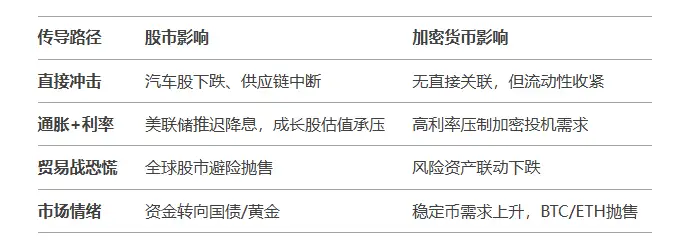Today's panic index is 40, and panic sentiment is spreading again.
The market has been moving within our expectations, with a decline under 88,000, which coincidentally pulled back to the 85,000-86,000 range we mentioned. Currently, this position can serve as a short-term entry point. The oscillation range has shifted from 8.3-8.6 to 8.5-8.8. The market is also waiting to see if tariff news can break through 90,000. If tariffs exceed expectations, they might push up import costs, putting pressure on stocks and cryptocurrencies. If tariffs drive up inflation, the Federal Reserve might tighten policy early, reducing market liquidity and increasing volatility; if inflation remains controlled, the Fed might maintain a dovish stance, providing market buffer.
VX: TZ7971
Can BTC Break Free from Consolidation?
On-chain data reveals new fund flow trends. Despite Bitcoin's stable price, on-chain data shows key signals:
Institutional Fund Migration: In the past 24 hours, 17 BTC transfers over $100 million occurred, with total on-chain transfer volume surging 268%, reaching a three-month high.
Exchange Flows: Coinbase showed a maximum 0.3% positive premium, while BTC exchange reserves dropped 1%, with approximately 12,000 bitcoins flowing into cold wallets. This "low volatility, high circulation" pattern suggests institutional investors might be conducting large-scale asset custody transfers.

Derivatives Market Balance: Perpetual contract funding rates returned to the neutral 0.01% zone, with options volatility surface showing put/call ratio (PCR) dropping to 0.85, indicating a slight recovery in bullish sentiment.
Notably, Bitcoin's Net Unrealized Profit/Loss (NUPL) has fallen from 0.68 last week to 0.55, showing some short-term holders are taking profits. glassnode data shows the number of addresses holding over 1,000 BTC increased by 12 against the trend, indicating whale accounts are quietly accumulating.
Bitcoin is emerging from the second deepest adjustment in this cycle. If Federal Reserve rate cut expectations and trade policy easing converge, breaking the $100,000 mark in Q2 remains possible.
Macro Variables
PCE Data as Crucial Touchstone
The US February core PCE price index to be released this Friday (March 28) might be the key variable breaking market balance. As the Fed's most closely watched inflation indicator, the market expects core PCE year-on-year growth might slightly rise from January's 2.6% to 2.7%. If data exceeds expectations, it could further delay rate cut expectations.
Currently, CME FedWatch tool shows trader expectations for Fed rate cuts have narrowed to 50-75 basis points, with the first rate cut potentially delayed to the third quarter. If PCE data reinforces the "sticky inflation" narrative, US bond yields might rise again, and a stronger dollar could temporarily suppress risk assets. In the current market context, subtle inflation data fluctuations might indirectly influence cryptocurrency market direction by changing liquidity expectations.
Tariff Implementation
Trade War Concerns + Economic Recession Risks
Intensifying Inflation Pressure, Fed Policy Tightening
Car Price Increases → CPI Rise
Trade war uncertainty might trigger fund withdrawal from risk assets, shifting towards government bonds, gold, and other safe-haven assets.
Market Liquidity Contraction: If tariffs drive up inflation and the Fed maintains high interest rates, reduced dollar liquidity could pressure the crypto market (dependent on cheap funds).
Leveraged Funds Withdrawal: In a high-interest environment, cryptocurrency speculation costs increase, reducing speculative funds.
If US stocks significantly drop due to trade wars, the crypto market might simultaneously decline.
If tariff policies are implemented, short-term market volatility might intensify, but long-term outcomes still depend on Fed response and global economic resilience.

For short-term traders, focus on Bitcoin's breakthrough direction at the $87,000 support and $90,000 resistance levels, constructing volatility strategies with options at low IV.
For medium to long-term holders, the current on-chain MVRV ratio (1.98) remains below historical bull peak (3.5), and address distribution indicators show healthy chip structure. Gradual accumulation during pullbacks remains a viable option.






